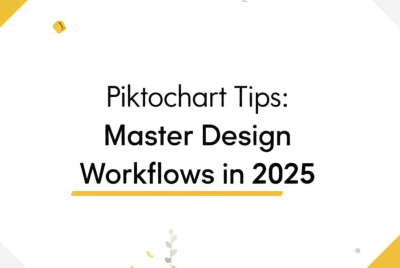As creatives, we’re told endlessly to “detach,” “be objective,” or “separate your emotions from your work.” But anyone who has poured hours into a layout, redesigned a concept for the tenth time, or built a visual identity from scratch knows the truth: sometimes you can’t put your emotions aside. And research backs this up.
A well-cited study by neuroscientist Antonio Damasio found that emotions play an essential role in decision-making; people who lost the ability to feel emotion (due to brain injury) became worse at making rational choices. In other words, emotions are not noise but a part of how we interpret information and assign meaning, especially in creative work. So telling designers to “be objective” when receiving feedback often oversimplifies a deeply human process.
Instead of suppressing the emotional response, the more productive path is to understand it, channel it, and use feedback as a strategic tool—not an attack, not a threat, but a lever for growth.
The five approaches below will help you turn feedback from something you dread into something that strengthens your craft, your confidence, and your collaborations.
1. Recognize the Why — Avoid a Repetition
Every piece of feedback carries a signal: a goal, a fear, a misalignment, or an expectation waiting to be clarified. Before reacting, step back and ask: What is this feedback trying to prevent? What is it trying to achieve?
Clients and teams often repeat concerns because the underlying issue hasn’t been addressed. Maybe the brand voice isn’t translating visually. Maybe leadership feels the design doesn’t communicate enough authority. Maybe the business problem has shifted.
Instead of hearing, “Change this,” listen for the deeper why.
Once you understand the why, you can prevent recurring loops i.e. those frustrating cycles of revisions where everyone feels stuck. Designers who master this skill not only improve their work but also strengthen their strategic role on a team.
2. Turn the Table — Be Gracious
Graciousness isn’t passivity; it’s strategic professionalism. When feedback stings, your instinct may be to defend the work. But graciousness flips the dynamic. It signals confidence, openness, and leadership.
Phrases like:
“Thanks for pointing that out—let me explore it.”
“That’s an interesting angle; here’s how I can integrate it.”
These responses create psychological safety. They show that you can listen without taking things personally. And ironically, when you respond graciously, stakeholders feel more at ease—and more likely to trust your expertise
3. Ask Questions to Build a Collaborative Atmosphere
One of the fastest ways to shift feedback from critique to collaboration is to ask thoughtful questions. This moves the conversation from “I don’t like this” to “Let’s solve this together.”
Questions like:
“What’s the core message you want this design to amplify?”
“Which part feels misaligned—the layout, the tone, or the visual hierarchy?”
“If this design could accomplish only one thing, what should it be?”
Questions reduce ambiguity, clarify expectations, and most importantly invite the other person into the design process. When stakeholders feel involved, they become partners instead of judges. The result is fewer painful revisions and more purposeful feedback.
4. Be the Third Person — Examine Their Opinion and Yours as an Observer
One of the most effective mental models for managing emotional response is creating psychological distance. Imagine stepping outside the conversation and observing it as a third party.
Ask yourself:
“If I were simply analyzing two perspectives, what would I see?”
“What does their feedback highlight about the problem we’re solving?”
“What does my reaction highlight about what I value in the work?”
This doesn’t eliminate emotion it helps you work with it. The third-person lens detangles identity from output. Your design is not you. Their feedback is not a judgment. You’re simply two parties trying to make the solution better.
This mindset is incredibly powerful in creative fields, where personal expression and professional delivery are constantly intertwined.
Final Thoughts: Turning Feedback Into a Strategic Advantage
Feedback will always stir emotion. That’s normal. That’s human. And in the creative industry, where work is deeply personal, emotions are part of the process and not barriers to it.
But when you learn to decode the why, respond with gracious strength, ask questions that deepen collaboration, and evaluate perspectives with distance, feedback stops feeling like criticism. It becomes a strategic asset.
Great designers don’t just master tools or aesthetics. They master the conversations around their work.
And that’s how feedback becomes your superpower.

